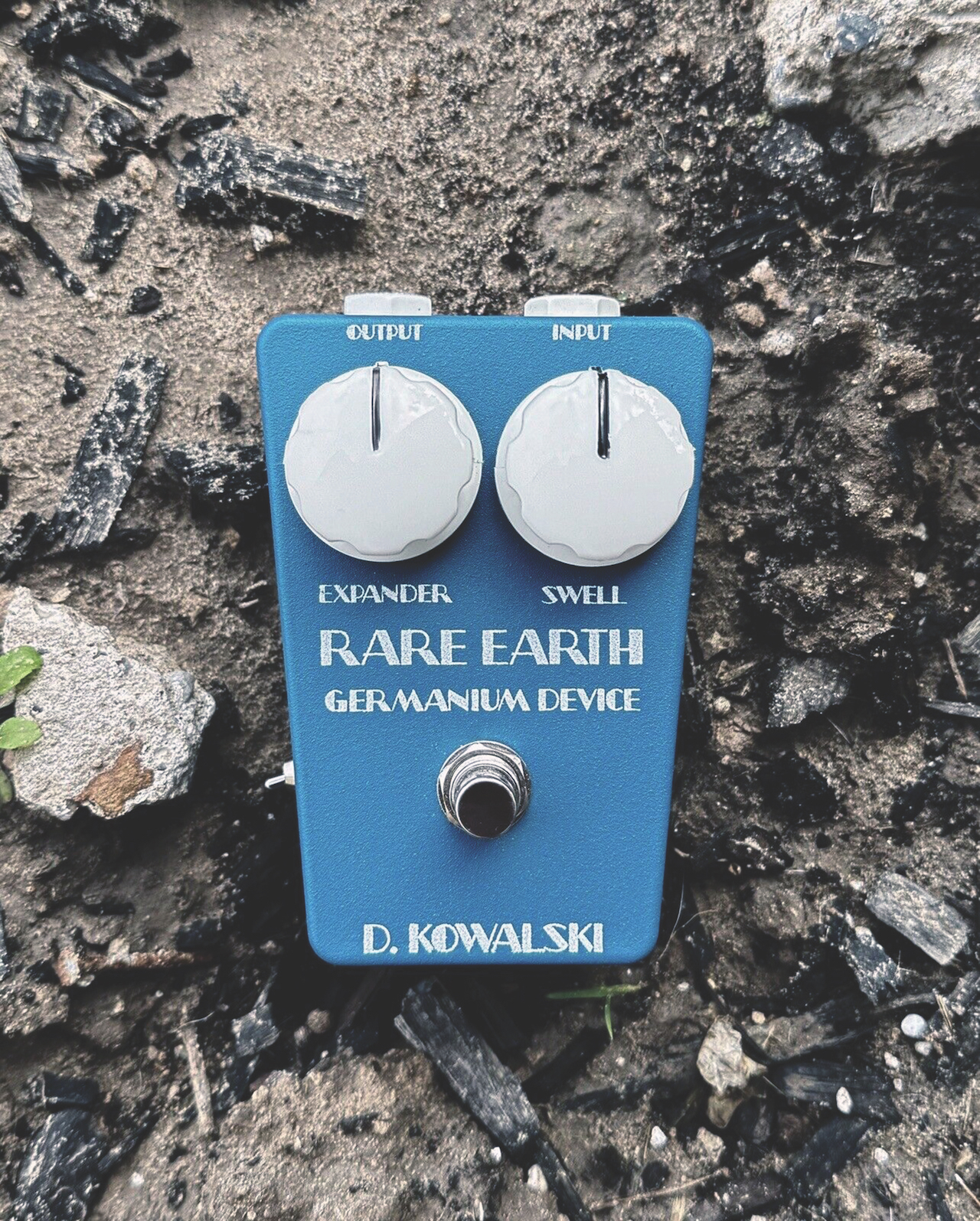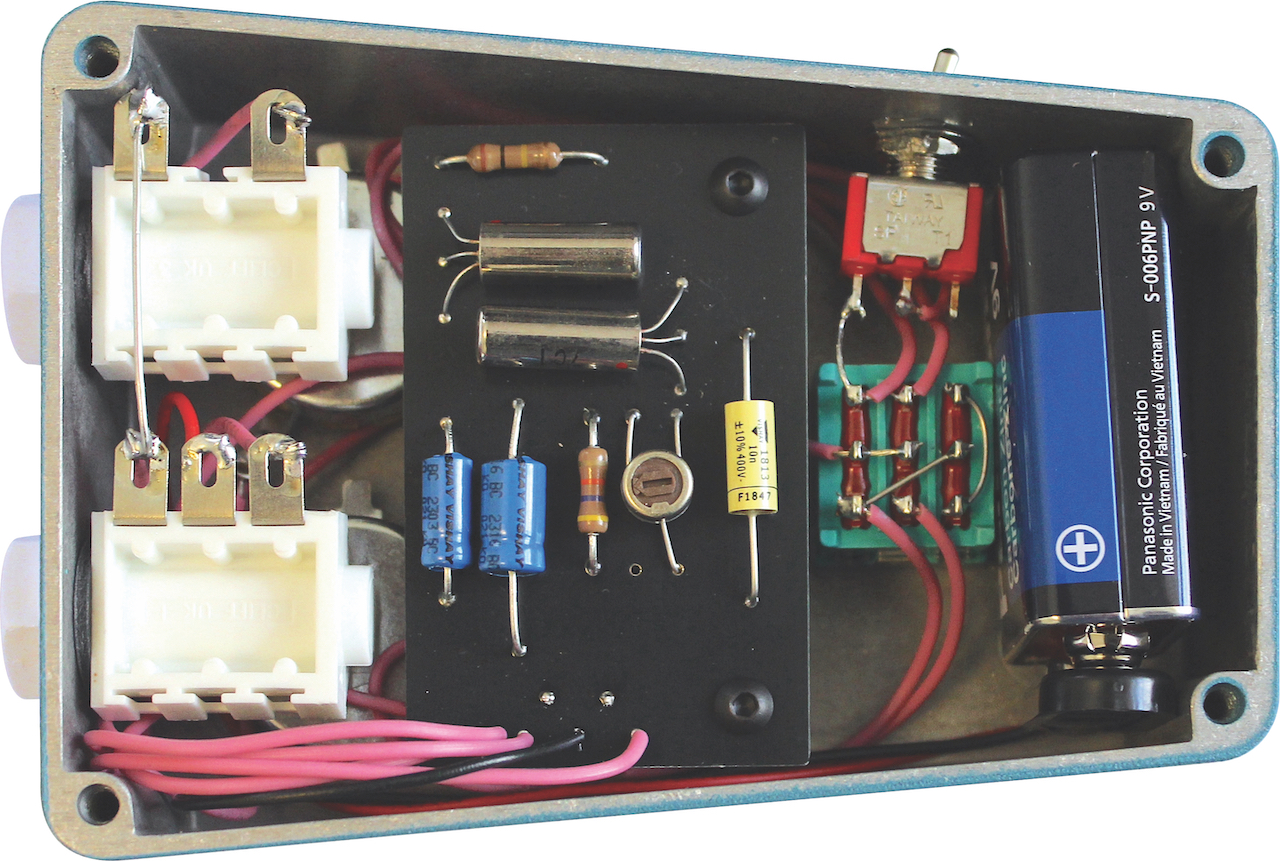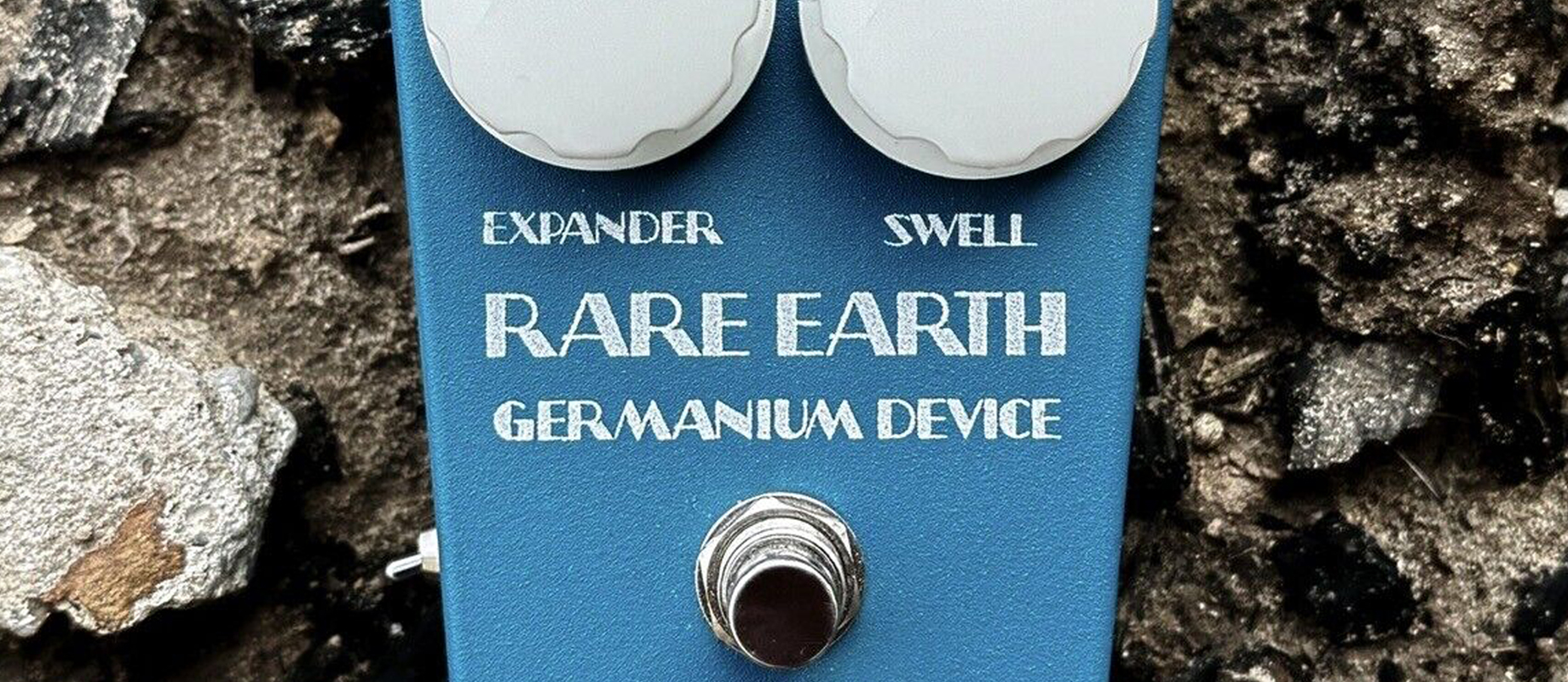GuitarPlayer Verdict
An inspiring variation on the iconic germanium fuzz
Pros
- +
Harmonically saturated medium-gain fuzz pedal
- +
Fun random edge
Cons
- -
No on/off indicator light
- -
DC power input
You can trust Guitar Player.
Almost all guitarists associate germanium with fuzz boxes. But in fact, this chemical element was used to make transistors and diodes for myriad applications before silicon components became more widely available. Amp maker David Kowalski has something of an obsession with germanium. Based in McAllen, Texas, Kowalski – whose Dark Gene micro amp was reviewed in our November 2021 issue – has created the Rare Earth Germanium Device to bridge the gap between overdrive and fuzz.
Quirky circuits
Inspired by the iconic two-transistor Tone Bender Mk 1.5 and Fuzz Face circuits of the ’60s, Kowalski spent years testing and selecting appropriate germanium components for his Germanium Device. He ultimately decided to work with suitable transistors from a range of makers, including Telefunken, Mullard, RCA, Brimar, NKT and – as found in our review sample – Amperex. Controls for swell and expander govern the input and output gain stages, respectively, and the pedal runs on an internal nine-volt battery only, as is Kowalski’s preference for germanium circuits.
The vagaries of these transistors mean that some pedals (my test model included) carry a mini-toggle Expander switch on the side, which converts traditional output control operation to a frequency-widening mode that extends various portions of the range. It takes advantage of a quirk that can be tapped from some germanium circuits and not others, and Kowalski points out that those pedals that don’t feature the switch function optimally without it.

In creating the Germanium Device circuit, Kowalski set out to undo aspects of the Tone Bender Mk 1.5 and Fuzz Face circuits that inhibited their range. “I modified the feedback portion of the circuits and capitalized on transistor leakage to restore otherwise obscured upper-midrange cut and definition,” he tells me. Working in conjunction with the Expander mode switch and swell control, his circuit “elegantly bridges the gap between less defined, complete saturation and articulate, raw germanium overdrive,” he adds.
Putting it more simply, Kowalski explains, “I really just wanted to create something I thought Jeff Beck would have used.”
Fuzz factor
It’s all housed in a crinkle-finished, powder-blue trapezoidal metal enclosure with a ’60s-style font, large white reproduction RCA radio knobs and white British-made Cliff jacks. A soft-click Gorva foot switch, Alpha potentiometers and Vishay capacitors add to the quality parts count in an elegantly handwired circuit that harks to the glory days of these pedals.
Tested using a Fender Jaguar and a Gibson ES-355 into a tweed Deluxe-style 1x12 combo and a 65amps London head and 2x12 cab, the Rare Earth Germanium Device Pedal slathered hairy and occasionally unpredictable harmonic saturation over my tone across its full range of gain settings.
All the latest guitar news, interviews, lessons, reviews, deals and more, direct to your inbox!
Although Kowalski voices his desire to coax overdrive from the circuit, to my ears it doesn’t dip much below the clipping levels of a classic fuzz pedal with its first knob set low — and I’d say that’s a good thing. Crispy and edgy at lower levels, with great playing dynamics, the Germanium Device segues into gradations of full-on fuzz about halfway up the swell knob’s rotation, and that’s where the party really begins.

At higher swell settings with the expander knob advanced (and/or the Expander mode switch flipped), the pedal coughs out inspiringly quirky dirt that’s occasionally glitchy and gated in a fun, freaky, frequency-dependent way. The result is often heard in a joyfully random response to your playing. For instance, the dissimilar voices of my guitars’ bridge and neck pickups were treated dramatically differently at times (the Jaguar’s “strangle switch” became a powerful tool here), unison bends in some positions induced crazy pulsing modulation, and the pedal slipped from smooth to snarly at different playing positions along the neck.
All in all, it makes for an inspiring variation on the iconic germanium fuzz. Kowalski’s Rare Earth Germanium Device Pedal brings new and fun aspects to the humble fuzz box, and for that it deserves our Editors’ Pick Award.
Specifications
Rare Earth Germanium Device Pedal
CONTACT D. Kowalski Amplifiers
PRICE $259 direct
CONTROLS Swell, expander, Expander mode switch (only on pedals that require it)
EXTRAS Single input and output, two hand-selected germanium transistors, internal battery only
SIZE 4.375” x 3” x 1.5” (LxWxD)
BUILT USA
KUDOS A harmonically saturated medium-gain fuzz pedal with a fun random edge
CONCERNS No on/off indicator light or DC power input
Dave Hunter is a writer and consulting editor for Guitar Player magazine. His prolific output as author includes Fender 75 Years, The Guitar Amp Handbook, The British Amp Invasion, Ultimate Star Guitars, Guitar Effects Pedals, The Guitar Pickup Handbook, The Fender Telecaster and several other titles. Hunter is a former editor of The Guitar Magazine (UK), and a contributor to Vintage Guitar, Premier Guitar, The Connoisseur and other publications. A contributing essayist to the United States Library of Congress National Recording Preservation Board’s Permanent Archive, he lives in Kittery, ME, with his wife and their two children and fronts the bands A Different Engine and The Stereo Field.


